How to choose the right ecommerce packaging for small businesses
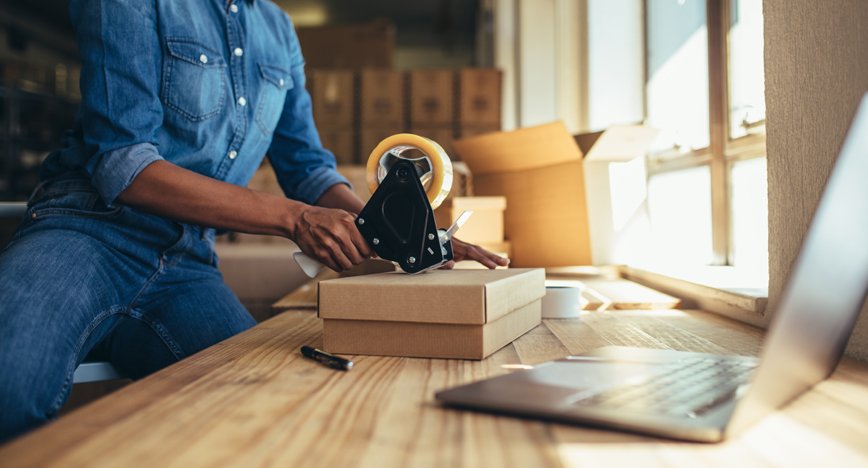
Welcome to ‘Packaging 101: A Guide for Small Business – our packaging guide for small businesses.
Throughout 2022, we’ll be releasing a monthly blog and how-to video to help support small businesses with their packaging.
During the year, our packaging guide will cover topics such as how to add a custom look to your packaging without breaking the bank and looking out for the best sustainable swaps available. This will help you expand your packaging knowledge and enable you to thrive as a developing business.
Our first blog in the series looks at how to choose the right ecommerce packaging for your small business. Whether this is a T-shirt, a painting, a candle, or something completely new; we’ll go through the very basics to help you make the best start and learn what is important when it comes to packing your product.
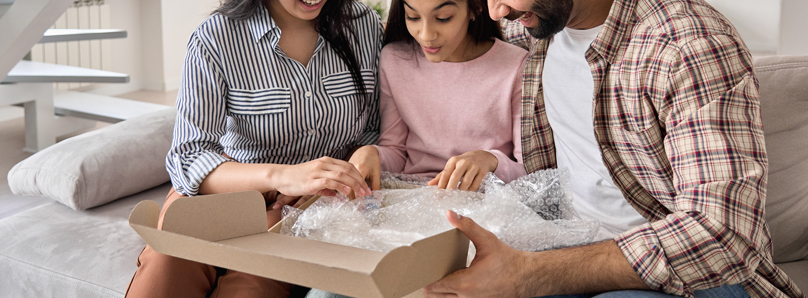
Understanding the basics of great ecommerce packaging
Through years of working with internet retailers – big and small, as well as our own packaging research, we’ve identified some basics of great ecommerce packaging.
We recommend that your ecommerce packaging should aim to be:
- Durable enough to protect your products
- Easy to open
- Light and space efficient
- The right size – with no excessive material
- Easy to return
- Sustainable and recyclable
- An extension of your brand
Protecting your product in transit is perhaps the most basic function your packaging performs. It will stop your goods getting damaged or dirty and makes sure your product gets to your customer in one piece. The kind of ecommerce packaging you need to choose will largely depend on your product or industry. If you’re shipping something fragile, you’ll need packing materials that cushion it to prevent damage. However, if you’re retailing items less prone to damage, like soft furnishing or clothes, you can use packaging that’s less-heavy duty.
You should also use your packaging to communicate with your customers. The packaging materials you use and any printing or branding you include should reflect your brand. What’s your business about? Understand what your priorities are and communicate them through your packaging. For example, if your product is sustainable – it makes sense that your ecommerce packaging should be too.
So, how do you choose the right packaging for your small business? To get you started, our experts have outlined the types of packaging that small businesses in popular ecommerce industries could consider…
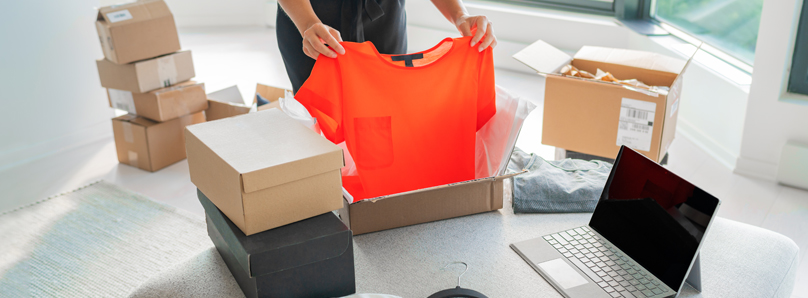
Fashion (Clothing & Apparel)
If you’re a small business in the fashion industry, the most common ecommerce packaging used for packing clothes is a mailing bag. You can choose from a traditional polythene mailing bag or opt for an environmentally friendly paper mailing bag. Mailing bags will keep your products clean and dry and are easy to post. Some of the benefits of a paper mailing bag include:
- They’re 100% recyclable and plastic free
- Most have a self-seal strip, so you don’t need extra tape
- Easy to post and easy to open
Depending on your product, you could also consider using boxes for more premium items. If you’re selling hand-made or luxury fashion – a mailing bag may not cut it. Remember to balance product protection with the customer experience you want to create.
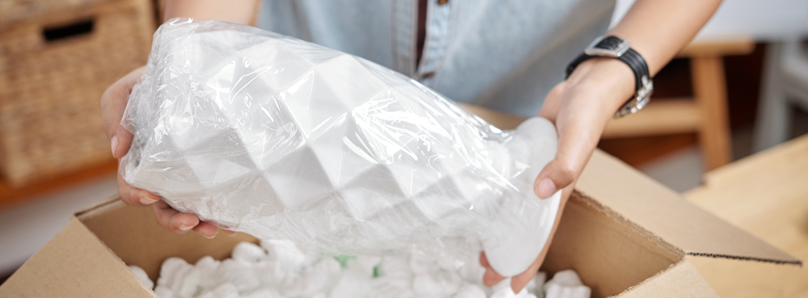
Home and Living
Home and living can encompass anything from handmade furniture to clay trinket bowls, and even soft furnishings or appliances…
When you’re retailing multiple products, it’s good to identify a core range of packaging materials that will fit most of your items – such as 3 or 4 different kinds of box, potentially padded envelopes and then accessories like tape. It’s a good idea to identify the size range of your products and then speak to an ecommerce packaging supplier who can recommend the specific packaging materials you need.
Many of these products are fragile. So, one consistent thing you need to think about is what packaging material will best protect your goods during transit. You want them to arrive in perfect condition! There are lots of protective packaging materials to choose from. Some of the most common options include bubble wrap, starch-based packing chips or paper cushioning…
The benefits of using starch -based packing chips
- Eco-friendly and easy to use – just pour into any size box
- Bio Loose Fill is 100% compostable because it’s made from starch
- S-Shape for optimal interlocking and secure cushioning
- Packing chips are also a cost-effective option
If you need your goods to stay in place, you may want to choose paper cushioning or bubble wrap over packing chips. The benefits of using paper cushioning include:
- 100% recyclable
- Provide a high level of protection and can absorb shock in transit
- Made from sustainable and renewable resources
One great example of paper cushioning that’s suitable for small businesses and retail environments is Geami WrapPak® EX Mini. It’s pre-loaded with expanding honeycomb paper and tissue that provides protection, as well as attractive presentation. It’s also 100% recyclable too!
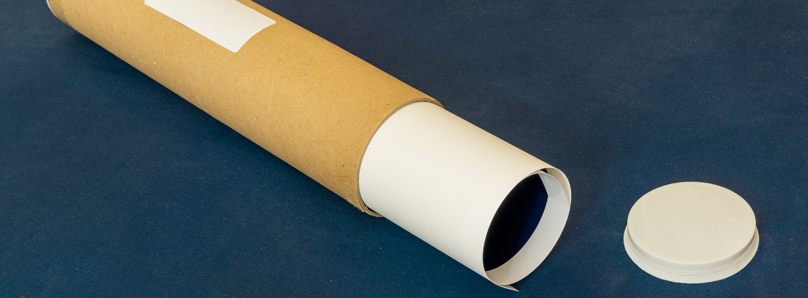
Art
Artwork has its own packaging challenges; you want to ensure your products arrive to your customers in a perfect condition – with no creases and no water damage. Framed artwork can be particularly tricky too, as corners can be prone to damage.
For unframed artwork like posters and prints, we recommend using postal tubes or solid board envelopes.
The benefits of using postal tubes:
- Great for plans, prints and posters
- Secure in transit due to plastic end cap
- Available in short and long postal tube sizes
- God for providing protection during transport
The benefits of using solid board envelopes:
- They conform with Royal Mail’s PIP Large Letter guidelines (Which means they will fit a through standard mailboxes in the UK!)
- Provide good protection – they’re hardened to prevent bending and damage
- Can be purchased in bulk
- Board envelopes are gusseted to expand from 0-30 mm for thicker items
If you’re selling framed artwork, you probably need more heavy-duty ecommerce packaging materials. Boxes teamed with cardboard edge and corner protectors will help provide cushioning and protection. You could also consider “off the shelf” packaging solutions that have been designed specifically for frames – like Airsac® inflatable packaging.
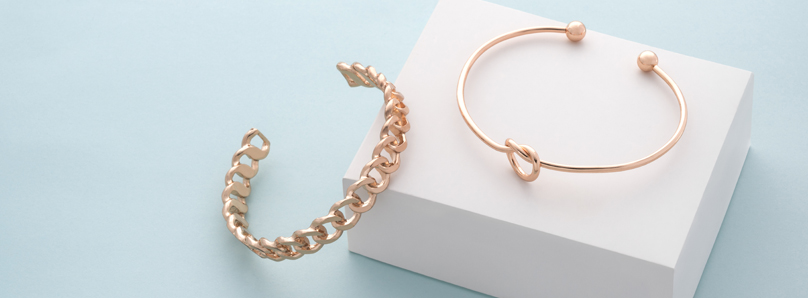
Jewellery
Just like home and living products, jewellery can come in all sorts of shapes and sizes. Due to its value and fragility, we recommend you opt for cardboard boxes as your ecommerce packaging if you’re retailing jewellery.
When choosing which size ecommerce box you need, remember to be mindful of how big your jewellery boxes are. If creating a more luxurious unboxing experience to reflect your products is important, you could consider using tissue paper to wrap items or opt for printed or coloured paper cushioning.
It’s important to remember that some packaging choices may not scale as you grow – the more personalised or intricate your packaging, the harder it will be scale up as your sales volumes increase. Asking your packaging supplier to help you balance customer experience with potential growth as this could be important for the future.
If you’re not sure about which cardboard box to choose – stay tuned and subscribe to our blog for a future instalment of this small business packaging guide.

Help with your ecommerce packaging
At Macfarlane Packaging, we’re working with small businesses every day to help them with their packaging. If you want a tailored ecommerce packaging recommendation for your brand, get in touch with us today.

